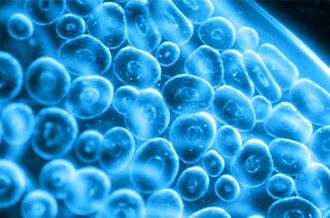Application and prospect analysis of chondroitin sulfate
Chondroitin sulfate (CS) is a glycosaminoglycan covalently bonded to protein to form proteoglycans. CS is widely distributed in the extracellular matrix and cell surface of animal tissues. The sugar chain consists of alternating glucuronic acid and n-acetylgalactosamine (n-acetylgalactosamine) disaccharide units connected to the serine residue of the core protein by a sugar-like link region. At present, the main sources of CS extraction are shark, cow, pig and chicken cartilage.
The main application of CS in medicine is as a drug for the treatment of joint diseases. Combined with glucosamine, IT has the effect of relieving pain and promoting cartilage regeneration, and can fundamentally improve joint problems. CS can protect corneal collagen fibers, promote corneal wound healing, exudate absorption and inflammation elimination. Through further degradation and structural modification, CS can also treat neuropathic headache, trigeminal neuralgia, coronary heart disease, angina pectoris, myocardial hypoxia, cardiovascular and cerebrovascular diseases, arthralgia, atherosclerosis and hepatitis. In addition, CS also has anticoagulant and antithrombotic effects, and can also be used in the adjuvant treatment of hearing impairment and liver function impairment caused by streptomycin, as well as the adjuvant treatment of hyperlipidemia. CS can also be used as an additive in health care products and food, which can enhance human body constitution, fight germs, beauty, and fight aging. Improves hearing and dry skin. In the body can inhibit the absorption of lipid and glucose in the small intestine to achieve weight loss.
At present, there are 18 CS manufacturers in China. Among them, such as Yantai Dongcheng Biochemical, Jiaxing Hengjie Biological, Qingdao Lvcui Biological, Qingdao Jiulong Biological, Sinochem (Qingdao island) industry and other companies are the main CS production enterprises. For many years, CS has been a small variety of medicine, small production and sales. Since 2000, the use of CS has been expanding, the market demand is booming, and the production and export volume in China have increased significantly year by year. Now CS has become the third largest export variety of biochemical drugs, and its development prospect is promising.
Although domestic CS API production has reached a certain scale, it is not difficult to find that the terminal products are still relatively simple. Although there are many dosage forms such as tablets, injection, eye drops and capsules, they are all relatively old varieties. In addition, a large number of CS are used in low-end products such as food additives, and no new drugs with CS as the main active ingredient have been launched in recent years. In the EU last year alone, there were two new drugs with CS as the main active ingredient on the market as anti-rheumatism drugs.
In addition to drugs, CS oligosaccharide standard products are also heavily dependent on imports. As a product with high added value, the production of standard products has high technical requirements, but also can bring huge economic benefits. In recent years, some research institutes have begun to prepare CS oligosaccharides. However, CS contains CSA, CSC, CSD, CSE, 2, 4-disulfide chondroitin, 2,4, 6-triulfide chondroitin and other components according to their different sulfidation sites.
The traditional CS oligosaccharide standard is mainly prepared by enzymatic degradation of the extracted CS polysaccharide, and then the chondroitin oligosaccharide is separated and purified one by one by using the separation technology at specific sulfated sites. However, due to the different content of CS oligosaccharides at different sulfated sites, the difficulty of separation and purification is different, and the price is very different. For example, CSD and CSE disaccharides are more than five times as expensive as CSA and CSC disaccharides due to their lower content.








